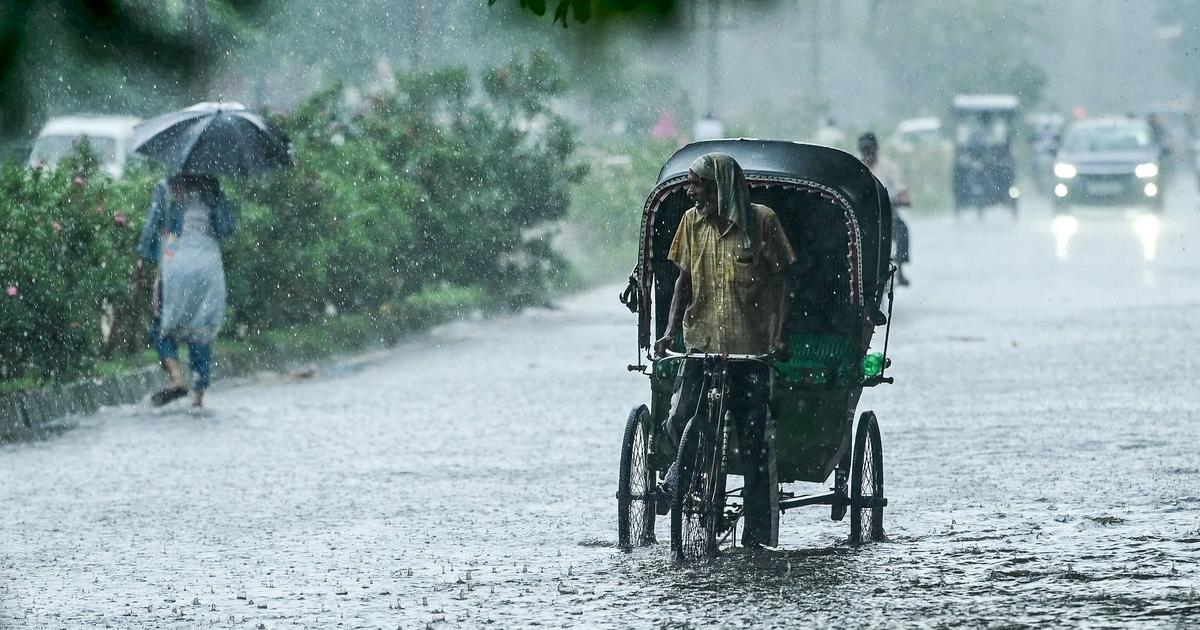India likely to see above-normal rainfall in August and September, says IMD
In August, countrywide rainfall is likely to remain within the normal range.

India is expected to receive above-normal rainfall during the second half of the southwest monsoon season, which is August and September, the India Meteorological Department said on Thursday.
The weather department in a press release stated that above-normal rainfall exceeding 106% of the long period average is most likely over the country during the second half of the monsoon.
The long period average is the measure of the mean rainfall during the four-month monsoon season over the last 50 years. The long period average of rainfall for August to September, based on data from 1971 to 2020, is 422.8 mm.
In August, countrywide rainfall is likely to remain within the normal range of 94% to 106% of the long period average, the release said.
The weather department said that most parts of the country are likely to receive normal rainfall in August, with the exception of the northeast and some adjoining areas in eastern India. Below-normal rainfall has been forecast for isolated parts of central and southwestern peninsular India.
The IMD’s forecast came as neutral El Niño-Southern Oscillation conditions prevail over the equatorial Pacific Ocean.
These conditions are likely to persist through the remainder of the monsoon season, according to the Monsoon Mission Climate Forecast System and other models.
The Indian Ocean Dipole is currently neutral but is expected to turn weakly negative by the end of the season.
The El Niño Southern Oscillation is a recurring climate pattern involving changes in the temperature of waters in the central and eastern tropical Pacific Ocean. These phases play a significant role in shaping India’s monsoon.
The Indian Ocean Dipole is the difference in the sea surface temperatures between the western parts of the Indian Ocean near Africa and the eastern parts of the ocean near Indonesia.
Neutral conditions, as currently prevailing, are generally favourable for normal monsoon activity, allowing local weather systems to function without major disruption from ocean temperature anomalies.
Meanwhile, India recorded above-normal rainfall in the first half of the southwest monsoon season, with several states, particularly Himachal Pradesh, experiencing flash floods.
Between June 1 and July 31, the country received 474.3 mm of rainfall, 6% above the normal of 445.8 mm for the period.
The good rainfall in July was attributed to favourable Madden-Julian Oscillation conditions during the latter half of the month and the formation of six low-pressure systems.
Four of these systems intensified into depressions, which continued to influence rainfall activity across northern and central India.
The Madden-Julian Oscillation is a large-scale tropical weather system characterised by an eastward-moving pulse of clouds, rainfall, winds and pressure that typically recurs every 30 days to 60 days and travels around the globe. It is one of the key factors driving short-term variability in monsoon rainfall.









